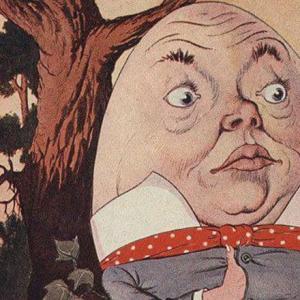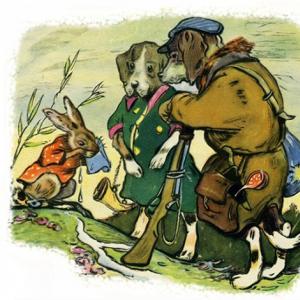4 kingdoms in biology. Wildlife kingdoms and their representatives: rich diversity and interconnection
Greetings, friends of nature. Today I want to tell you what kingdoms of living nature and their representatives exist and rule on our earth. They interested me with their rich diversity, since nature has created all its diversity for many millions of years.
It turns out that this is not one kingdom, but several and they cannot live without each other, because in nature everything is interconnected. Do you know the representatives of the living kingdom?
How beautiful our land is at any time of the year, on which everything is so rationally arranged that all living organisms on it, to one degree or another, depend on each other.
Sometimes we don't even think about it and pay no attention. About what kingdoms of nature exist, how they are called and how many of them, I will try to tell you.
These tiny microorganisms - germs and bacteria exist everywhere you look. But they can only be seen under a microscope because of their small size. And so, looking into the lens of a microscope, you can find bacteria of different structure.
There are in the form of a ball, and there are straight bacteria - like a stick, some curved, while others have bizarre shapes. Their diversity is so rich that it will not be easy to list them all here.
Speaking of bacteria, all of them can be roughly divided into:
- Useful, which are in every living being and help not only to properly digest food, but also protect against various diseases.
- Harmful, which cause various poisoning and disorders of the digestive system and other organs.
In addition, bacteria and microbes still exist in this kingdom, the first of which, as I said above, can be both useful and harmful. But microbes are only harmful.
This is how this kingdom of good and bad microorganisms is arranged in a nutshell.
The kingdom of viruses
So, for example, the hepatitis virus can live in the human body without damaging liver cells for many years. Currently known:
After reading this name of the kingdom, you probably thought about forest mushrooms? Of course, you thought correctly, but there are still a lot of mushrooms in the world that grow not only in the forest in a clearing, but also on the river and seabed.
More than 100 thousand species of mushrooms are known to our science today. It turns out that the most common yeast is. And all the well-known forest mushrooms are edible and inedible.
Molds are also ubiquitous and sometimes difficult to get rid of.
 They are very harmful, as they lead to crop losses, diseases of people and animals. But there are also useful mushrooms among them, such as penicillus. Isn't it - a familiar name, apparently you guessed that the antibiotic penicillin is derived from it.
They are very harmful, as they lead to crop losses, diseases of people and animals. But there are also useful mushrooms among them, such as penicillus. Isn't it - a familiar name, apparently you guessed that the antibiotic penicillin is derived from it.
Almost everyone who has their own personal plot grows currant or gooseberry bushes. And everyone strives to treat them from powdery mildew in the spring. This plant disease is caused by powdery mildew fungi.
Well, who does not know this fabulous kingdom, which is so rich and varied?
We are pleased with their representatives both at home and on the street. Every spring, various plants bloom and bloom, giving us flowers that exude a delicate aroma.
About 400 thousand species of plants on our planet. The table below explains which species the plant kingdom is divided into.
 And I would also add medicinal and poisonous plants to them. I hope you don't mind this?
And I would also add medicinal and poisonous plants to them. I hope you don't mind this?
This numerous kingdom fulfills huge role on our earth, as it enriches the air with oxygen, they are food for many animals. And we grow their representatives at our dacha:
- fruits and berries,
- fruits and vegetables,
- flowers and roses,
- trees and shrubs.
Trees give us cool shade in hot weather, and in cold weather they warm our homes. Without life on earth will cease to exist.
Animal kingdom
A microscopic amoeba and a huge blue whale, what do they have in common - you ask? One is big and the other is tiny. And yet they are in this one kingdom. And why? Because they feed, reproduce and breathe on their own.
Approximately 2 million species in the animal kingdom live on our planet. Single-celled or multicellular living organisms they all exist and evolve for more than one million years.
Representatives of all these 5 kingdoms live and prosper, mutually complementing each other.
It is impossible to imagine a predator of a wolf grazing in a clearing and chewing grass. Or a curly lamb hunting a long-eared hare. After all, this is impossible in nature. Thus, all the kingdoms of the living world cannot exist without each other.
Living organisms, when dying, are processed by bacteria. Viruses, by killing the host, provide food for the bacteria. The bacteria, in turn, provide food for the plants. Plants produce oxygen and feed the animals. The circulation of living things in nature is an indisputable proof of their relationship.
Take a look at all this variety of the kingdom of nature, which are presented here as a small but visual diagram and everything will become clear to you.
 I hope you enjoyed my little overview of the wildlife kingdoms and their representatives, and you learned a lot of useful things from it. Write about it in your comments, I will be interested to know about it. And that's all for today. Let me say goodbye to you and see you again.
I hope you enjoyed my little overview of the wildlife kingdoms and their representatives, and you learned a lot of useful things from it. Write about it in your comments, I will be interested to know about it. And that's all for today. Let me say goodbye to you and see you again.
I suggest you subscribe to blog updates. And also you can rate the article on the 10th system by marking it with a certain number of stars. Come to visit me and bring your friends, because this site was created especially for you. I am sure that you will definitely find a lot of useful and interesting information here.
Throughout the history of human existence, a lot of knowledge has been accumulated about the diversity of living nature. With the help of the science of taxonomy, all living nature is divided into kingdoms. In this article we will tell you which kingdoms of living organisms are studied by biology, about their features and characteristics.
The difference between living nature and inanimate nature
Distinctive features of wildlife are:
- growth and development;
- breath;
- food;
- reproduction;
- perception and response to environmental influences.
However, it is not so easy to distinguish living organisms from inanimate nature. The fact is that many objects are similar in their chemical composition. For example, salt crystals can grow. And, for example, the seeds of plants that belong to living nature are dormant for a long time.
All living organisms are divided into two types: non-cellular (viruses) and cellularwhich are made up of cells.
Unlike all living organisms in existence, viruses do not have cells. They settle inside the cell, thereby causing various diseases.
Also, a characteristic feature of all living things is the similarity of internal chemical compounds... An important factor is the metabolism with environment, as well as response to influences from the external environment.
TOP-4 articleswho read along with this
All living nature has its own classification. Kingdoms, types, classes of living organisms are the basis of biological systematics. Cellular organisms consist of two kingdoms: prokaryotes and eukaryotes. Each of them is divided into separate kingdoms, hierarchy levels scientific classification of all existing biological species. In separate kingdoms, scientists combine bacteria, plants, fungi and animals.

Fig. 1. Kingdoms of living organisms.
The human body belongs to the animal kingdom.
Bacteria
These organisms are classified as prokaryotes, since they do not have a nuclear envelope. There are no organelles inside the cell, DNA is located directly in the cytoplasm. They live everywhere, they can be found in the depths of the earth's surface, and on mountain peaks.
Another type of prokaryotes are archaea, which live in extreme conditions. They can be found in hot springs, Dead Sea waters, animal intestines, and soil.
Mushrooms
This group of wildlife is quite diverse. They are divided into:
- cap mushrooms (outside they have a leg and a hat, which are attached to the surface of the ground with the help of a mycelium);
- yeast ;
- mucor - a unicellular fungus of microscopic size. If it is present, a fluffy grayish coating is formed, which turns black over time.
Plants
Inside the plant cell are organelles, for example, chloroplasts, capable of carrying out the process of photosynthesis. Plant cells are surrounded by a solid wall, which is based on cellulose. Inside the cell is the nucleus, the cytoplasm with organelles.

Fig. 2. The structure of the plant cell.
Animals
An animal cell does not have a strong wall, like in plants, so some of them are able to contract, for example, cells of the muscular system. Animals move actively, have a musculoskeletal system. Inside the body of an animal there are whole systems of organs that regulate the work of the whole organism.
 4.5. Total ratings received: 555.
4.5. Total ratings received: 555.
KINGDOM
1) in biology - the highest unit in the system of living organisms. There are 5 kingdoms: archaebacteria, bacteria, animals, fungi and plants. Kingdoms are divided into subkingdoms and further into types. Many scientists propose to distinguish taxa of an even higher rank than the kingdom - the super-kingdoms, uniting archaebacteria and bacteria into the super-kingdom of prokaryotes, and 3 other kingdoms - into the super-kingdom of eukaryotes;
2) in biogeography - the highest unit of floristic and faunistic zoning of land and the World Ocean.
Encyclopedia Biology. 2012
See also the interpretations, synonyms, meanings of the word and what the KINGDOM is in Russian in dictionaries, encyclopedias and reference books:
- KINGDOM in the Big Encyclopedic Dictionary:
- KINGDOM in the Great Soviet Encyclopedia, TSB:
(biological), 1) one of the highest taxonomic categories (ranks) in the system of the organic world. Since the time of Aristotle, the division of all has been accepted ... - KINGDOM in the Modern Encyclopedic Dictionary:
- KINGDOM in the Encyclopedic Dictionary:
(biological), the highest taxonomic category (rank). Since the time of Aristotle, the entire organic world has been divided into two kingdoms: plants and animals. In modern ... - KINGDOM in Encyclopedic Dictionary:
, -a, cf. 1. The state headed by the king (obsolete and special). 2. Board of someone. king, reign. Select on c. ... - KINGDOM
THE KINGDOM OF POLISH, named. part of Poland, which became part of Russia in 1815 by the decision of the Congress of Vienna 1814-15. The capital is Warsaw. ... - KINGDOM in the Big Russian Encyclopedic Dictionary:
KINGDOM (biol.), Higher. taxonomic. category (rank). Since the time of Aristotle, all organic. the world was subdivided into 2 Ts .: r-niya and zh-nye. IN … - KINGDOM in the Complete Accentuated Paradigm by Zaliznyak:
tsa "rstvo, tsa" rstva, tsa "rstva, tsa" rstvo, tsa "rstu, tsa" rstvom, tsa "rstvo, tsa" rstva, tsa "rstvo, tsa" rstva, tsa "rstvo, ... - KINGDOM in the Dictionary for solving and compiling scanwords:
Patrimony ... - KINGDOM in the Thesaurus of Russian Business Vocabulary:
‘State’ Syn: ... - KINGDOM in the Thesaurus of the Russian language:
‘State’ Syn: ... - KINGDOM in Abramov's Dictionary of Synonyms:
see power, state, circle, region || sleepy ... - KINGDOM in the dictionary of Synonyms of the Russian language:
hades, state, land, empire, category, kingdom, monarchy, rule, country, sphere, han, kingdom, ... - KINGDOM in the New explanatory and derivational dictionary of the Russian language by Efremova:
wed 1) a) The state ruled by the king (1), queen (1). b) the land of such a state. c) The population of such a state. d) transfer. A place, … - KINGDOM in the Dictionary of the Russian language Lopatin:
Kingdom (Kingdom) ... - KINGDOM
kingdom, ... - KINGDOM in the Complete Spelling Dictionary of the Russian Language:
Kingdom (Kingdom) ... - KINGDOM in the Spelling Dictionary:
kingdom (kingdom) ... - KINGDOM in the Spelling Dictionary:
kingdom, ... - KINGDOM in the Ozhegov Russian Language Dictionary:
one of the four higher spheres of the organic world Spec C. animals. C. plants. C. mushrooms. C. Shotguns. kingdom this or that ... - KINGDOM in the Modern Explanatory Dictionary, TSB:
in biology - the highest taxonomic category (rank). Since the time of Aristotle, the entire organic world has been divided into two kingdoms: plants and animals. ... - KINGDOM
kingdoms, cf. 1. State ruled by the king. Muscovy. Past the Buyan island to the kingdom of the glorious Saltan. Pushkin. 2. Only units. Governing body … - KINGDOM in Explanatory dictionary Russian language Ushakov:
heavenly - see heavenly in 3 meanings, cf. ...
The kingdom of bacteria is referred to, to the domain of archaea - the kingdom of archaea, to the domain of viruses - the kingdom of viruses, to the domain of eukaryote - all other kingdoms.
| |
|
|||||||||||||||||||||||||||||||||||||||||||||||||||
| |
Story
Even in ancient times, people divided all living organisms into animals and plants. Aristotle classified animals in his History of Animals, and his student Theophrastus wrote a parallel work on plants, History of Plants.
Thanks to the development of microscopes and the advent of the electron microscope, scientists were able to discover significant differences between unicellular organisms: some of them (eukaryotes) had a nucleus, while others (prokaryotes) did not. In 1938, Herbert Copeland proposed a classification of living organisms with four kingdoms. In the fourth kingdom - Monera, he placed bacteria and blue-green algae that did not have a nucleus.
Scientists understood how the fungi that were part of the plant kingdom were different from other plants. Ernst Haeckel proposed to move the mushrooms from the kingdom of plants to the kingdom of the Protists, but soon changed his mind and refuted his idea himself. Robert Whittaker proposed to distinguish mushrooms as a separate kingdom. In 1969 he proposed new system classification with five kingdoms, which is popular today. It is based on the differences between organisms in nutrition - representatives of the plant kingdom are multicellular autotrophs, animals - multicellular heterotrophs, fungi - multicellular saprotrophs. The Realms of Protists and Bacteria include unicellular and protozoan organisms. All five kingdoms are divided into the super kingdoms of eukaryotes and prokaryotes, depending on whether the cells of these organisms have a nucleus.
Write a review on "Kingdom (Biology)"
Notes (edit)
| Butterfly | This is a stub of a biology article. You can help the project by supplementing it.
If possible, this note should be replaced by a more precise one. |
To improve this article, it is desirable:
|
| Taxonomic ranks |
|
Domain (Kingdom) - Kingdom - Sub-kingdom - Supertype / Subdivision - A type /The Department - Subtype / Subdivision - Infratype - Superclass - Class - Subclass - Infraclass - Superorder / Superorder - Squad /Order - - - |
Kingdom Passage (Biology)
- It's a long story. But this really is not our place ... Stella lives at the very top. Well, I'm still on Earth ...- How - on Earth ?! He asked, stunned. - It means - are you still alive? .. But how did you end up here? Yes, even in such horror?
- Well, to be honest, I don't like this place too much either ... - I shivered with a smile. - But sometimes very good people... And we are trying to help them, as we helped you ...
- And what should I do now? I don’t know anything here ... And, as it turned out, I also killed. So this is exactly my place ... Yes, and someone needs to take care of them, ”Arno said, affectionately patting one of the kids on the curly head.
The kids gazed at him with ever-growing confidence, well, and the little girl generally grabbed like a tick, not going to let him go ... She was still quite tiny, with big gray eyes and a very funny, smiling face of a cheerful monkey. In normal life, on the "real" Earth, she must have been a very sweet and affectionate child loved by all. Here, after all the horrors she had experienced, her pure, funny face looked exhausted and pale to the limit, and horror and melancholy constantly lived in her gray eyes ... Her brothers were a little older, probably 5 and 6 years old. They looked very scared and serious , and unlike their little sister, did not express the slightest desire to communicate. The girl, the only one of the three, was apparently not afraid of us, as she very quickly got used to her “newfound” friend and asked quite boldly:
- My name is Maya. Can I please stay with you? .. And brothers too? We have no one now. We will help you, - and turning to Stella and me, she asked, - Do you live here, girls? Why do you live here? It's so scary here ...
With her incessant hail of questions and the manner of asking two people at once, she strongly reminded me of Stella. And I laughed heartily ...
“No, Maya, we certainly don't live here. It was you who were very brave to come here yourself. It takes a lot of courage to do this ... You are really great! But now you have to go back to where you came from, you have no more reason to stay here.
- And mom and dad "completely" died? .. And we will not see them again ... Really?
Maya's plump lips twitched, and the first large tear appeared on her cheek ... I knew that if this was not stopped right now, there would be a lot of tears ... But in our current "general screwed-up" state, this was absolutely impossible ...
“But you’re alive, aren’t you ?! Therefore, whether you like it or not, you have to live. I think that mom and dad would be very happy if they knew that everything is fine with you. They loved you very much ... - as I could have fun, I said.
- How do you know? - the baby stared at me in surprise.
“Well, they did a very difficult thing to save you. Therefore, I think only by loving someone very much and cherishing it, you can do this ...
- Where are we going now? Will we go with you? .. - Asked Maya, looking at me with her huge gray eyes, inquiringly and pleadingly.
- Here Arno would like to take you with him. What do you think of it? He is also not sweet ... And he will have to get used to many things in order to survive. So you will help each other ... So, I think, it will be very correct.
Stella finally came to her senses, and immediately "rushed to the attack":
“How did it happen that this monster got you, Arno?” Do you remember anything? ..
- No ... I only remember the light. And then a very bright meadow, bathed in the sun ... But it was no longer the Earth - it was something wonderful and completely transparent ... This does not happen on Earth. But then everything disappeared, and I "woke up" already here and now.
- What if I try to "look" through you? - suddenly came into my head a completely wild thought.
They were subdivided into two kingdoms - the animal kingdom and the plant kingdom. The main difference between animals and plants was the way they were fed. Animals were considered those who used ready-made food as food. organic material (heterotrophic diet), by plants - organisms that themselves synthesize the necessary organic material from inorganic compounds (autotrophic diet). More precisely, heterotrophic organisms are those that should receive in the form of its organic compounds, and autotrophic organisms are able to use carbon in an inorganic form, namely in the form of carbon dioxide (CO 2, carbon dioxide). usually it is necessary to search for food and therefore they must be capable of locomotion. And this presupposes the presence of a nervous system that ensures coordination of movements in more highly organized animals. they lead an immobile lifestyle, they are unable to move and, therefore, nervous system they don't need it.
However, this classification overlooks the obvious fact that all cellular organisms fall into two natural groups, now called prokaryotes and eukaryotes.
There is a fundamental difference between these two groups. The terms "prokaryotes" and "eukaryotes" reflect the difference in localization (of genetic material) in a cell. In prokaryotes, DNA is not surrounded by a nuclear membrane and floats freely in the cytoplasm. In other words, these cells do not have a true (formed) nucleus (pro - in front; karyon - nucleus). In the cells of eukaryotes there is a real nucleus (eu - completely, good). Eukaryotes evolved from prokaryotes.
Fig. 2.4. A. Classification according to Margelis and Schwartz: all organisms are divided into five kingdoms. Viruses do not correspond to any of the groups in this classification of living organisms, since they are too simple, do not have a cellular structure and are not able to exist independently of other organisms. B. Evolutionary relationship between the five kingdoms. As can be seen from the diagram, starting with protoctists, evolution proceeded in the direction of multicellularity.
The division of all organisms into animals and plants faces certain difficulties. For example, fungi are heterotrophs, but at the same time they are not able to move. So where are they to be attributed? To get out of this situation, it was decided that there must be more than two kingdoms. In 1982, Margelis and Schwartz (Margulis, Schwartz) proposed a system that provides for the presence of five kingdoms - the kingdom of prokaryotes and four kingdoms of eukaryotes (Fig. 2.4). The Margelis and Schwartz system has gained wide acceptance and is now recommended for use. It is believed that eukaryotes form the super-kingdom of the Eukaryotae. The most controversial group is the Protoctists, perhaps because they are not a natural group. This issue is discussed in detail in Sec. 2.6.
Viruses form another group of "organisms" that do not fit into any of the classification systems. Viruses are extremely small particles made only of genetic material (DNA or RNA) surrounded by a protective protein coat. Unlike all other organisms, viruses do not have a cellular structure and are able to reproduce only after entering a living cell. The nature of viruses is discussed in Sec. 2.4, and in Fig. 2.4, And they are highlighted in an additional group.
All the smallest organisms, although they do not form a natural taxonomic unit, are often combined into one group under a common name microorganisms or germs... This group includes (prokaryotes), viruses, fungi and protoctists. Such a combination is convenient for practical purposes, since the methods used to study these organisms are usually similar. So, in particular, for their visual observation it is necessary, and their cultivation should be carried out under aseptic conditions. The science that studies microorganisms forms one of the branches of biology, called. Microorganisms are becoming increasingly important in such fields of science as biochemistry, genetics, agrobiology and medicine; in addition, they form the backbone of an important branch of industry called biotechnology. This issue is discussed in more detail in Ch. 12. Some microorganisms, such as bacteria and fungi, also play an important ecological role as decomposers (Section 10.3.2.).






